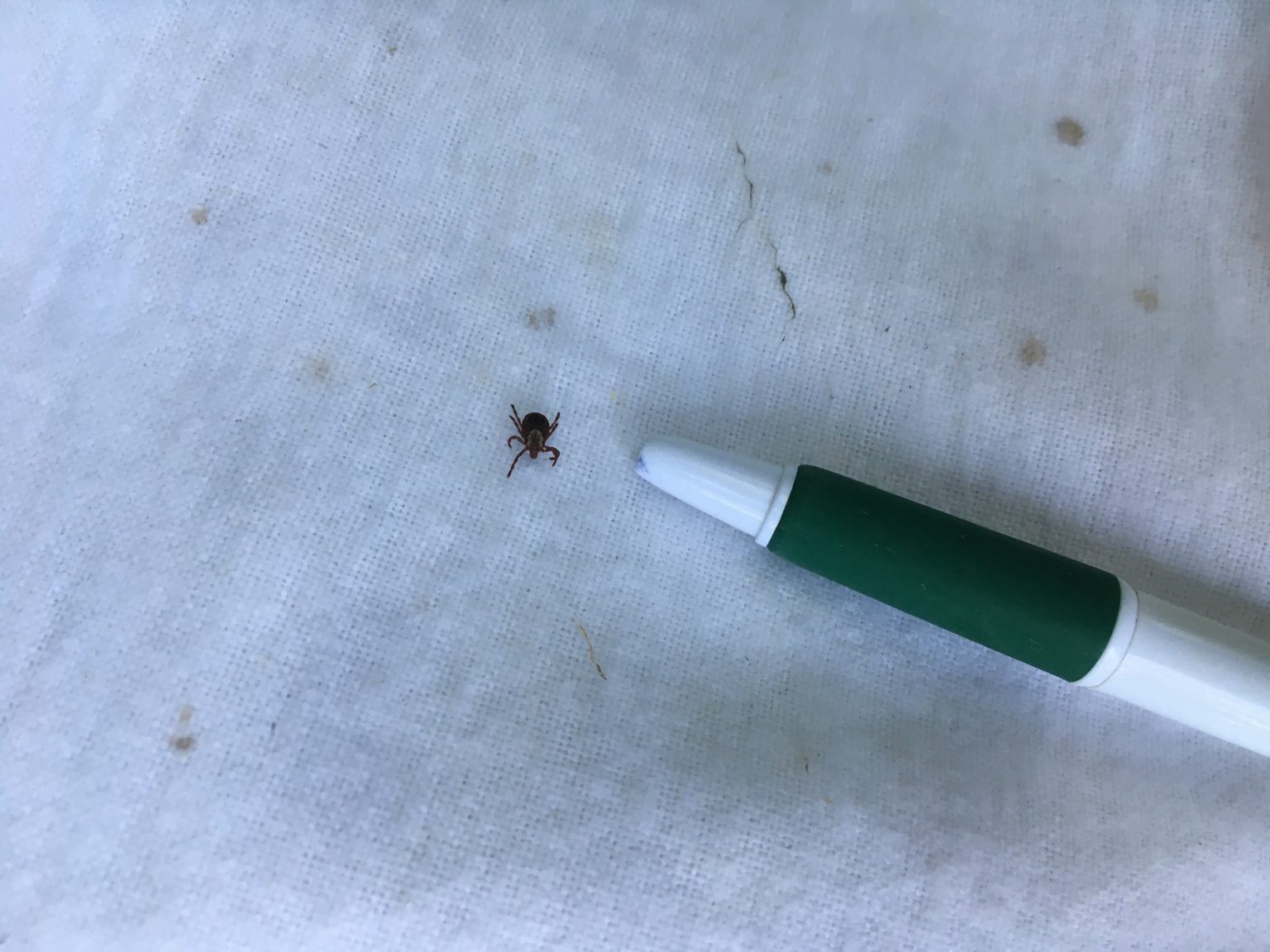TickZoo: The Ultimate Guide To Exploring Nature’s Tiny Creatures
Hey there, nature enthusiasts! If you're diving into the world of tiny critters, you're in for an adventure. TickZoo is not just another buzzword; it’s a fascinating realm where the smallest creatures play a big role in our ecosystem. Whether you're a biologist, a curious hiker, or someone who wants to know more about these tiny beings, TickZoo has something for everyone. Let’s dive in and uncover the secrets of this incredible world.
Imagine walking through a forest, feeling the crisp air brush against your skin, and suddenly you spot one of these tiny creatures. What are they? Why do they matter? And how do they impact our lives? TickZoo explores all these questions and more. It’s not just about ticks—it’s about understanding the intricate web of life that surrounds us. So, buckle up, because we’re about to embark on a journey through the wild and wonderful world of ticks and their zoo-like ecosystem.
Now, before we jump into the nitty-gritty details, let’s set the stage. TickZoo isn’t just about ticks. It’s about the interconnectedness of nature, the role these tiny critters play, and how they can affect both the environment and human health. This guide is packed with info, tips, and insights to help you navigate this often misunderstood world. Let’s get started!
- Telegram Somali Wasmo A Cultural Phenomenon You Need To Know About
- Movierulz Telugu Ullu The Ultimate Guide To Your Movie Streaming Needs
What is TickZoo?
In simple terms, TickZoo refers to the collective ecosystem where ticks thrive. It’s not just about the ticks themselves but also the plants, animals, and microorganisms that coexist with them. Ticks, though tiny, are powerful players in this ecosystem. They can transmit diseases, regulate populations, and even influence the behavior of larger animals. Understanding TickZoo means understanding the delicate balance of nature.
For instance, did you know that ticks have been around for millions of years? Yep, they’ve been part of the Earth’s ecosystem since the time of dinosaurs. And while they might seem like pests, they actually play a crucial role in maintaining the health of ecosystems. By feeding on blood, they help control populations of certain animals, preventing overpopulation and its associated problems.
Why Should You Care About TickZoo?
Here’s the deal: ticks aren’t just creepy-crawlies. They can have a massive impact on human health. Diseases like Lyme disease, Rocky Mountain spotted fever, and babesiosis are all transmitted by ticks. These diseases can be debilitating, and understanding TickZoo is the first step in preventing them.
- 5movierulz Kannada Your Ultimate Guide To Exploring The World Of Kannada Movies
- Why Vegamovies3 Is A Gamechanger In The Streaming World
Beyond health concerns, TickZoo also plays a role in agriculture and wildlife management. Ticks can affect livestock, reduce crop yields, and even influence the migration patterns of animals. By studying TickZoo, scientists can develop better strategies to protect both humans and animals from tick-borne threats.
The Anatomy of a Tick
Let’s break it down. Ticks are arachnids, which means they’re related to spiders and scorpions. They have a simple body structure with a head, thorax, and abdomen. But don’t let their simplicity fool you—ticks are incredibly efficient at what they do.
Here’s a quick rundown of tick anatomy:
- Head: Contains the mouthparts, which are used for piercing skin and sucking blood.
- Thorax: Where the legs are attached. Ticks have eight legs, making them distinct from insects.
- Abdomen: The part that swells up when the tick feeds. It’s also where the reproductive organs are located.
Understanding tick anatomy is crucial for identifying different species and understanding their behavior. For example, some ticks are more likely to carry diseases than others, and knowing the differences can help you stay safe.
Common Tick Species in TickZoo
There are hundreds of tick species around the world, but a few stand out in TickZoo. Here’s a quick look at some of the most common ones:
1. Deer Tick (Ixodes scapularis)
Also known as the black-legged tick, this little guy is infamous for spreading Lyme disease. Found primarily in the eastern United States, the deer tick thrives in wooded areas and grassy fields.
2. American Dog Tick (Dermacentor variabilis)
This tick is a common sight in parks and trails. It’s known for transmitting Rocky Mountain spotted fever and tularemia. Keep an eye out for it if you’re a pet owner, as it loves to hitch a ride on dogs.
3. Lone Star Tick (Amblyomma americanum)
Named for the distinctive white spot on its back, the Lone Star tick is found throughout the southeastern United States. It’s known for causing a rare allergy to red meat in humans.
Each of these species has its own unique characteristics and behaviors, making TickZoo a diverse and complex ecosystem.
TickZoo and Human Health
Let’s talk about the elephant in the room: diseases. Ticks are notorious for spreading illnesses, and understanding TickZoo can help you stay safe. Here are some of the most common tick-borne diseases:
- Lyme Disease: Caused by the bacterium Borrelia burgdorferi, Lyme disease can lead to flu-like symptoms, joint pain, and neurological issues if left untreated.
- Rocky Mountain Spotted Fever: A serious illness caused by the bacterium Rickettsia rickettsii, it can lead to severe complications if not treated promptly.
- Babesiosis: This disease affects red blood cells and can cause symptoms ranging from mild fever to severe anemia.
Prevention is key when it comes to TickZoo. Wear protective clothing, use insect repellent, and always check yourself for ticks after spending time outdoors. Early detection and treatment can make all the difference.
TickZoo in Agriculture
Agriculture is another area where TickZoo plays a significant role. Ticks can affect livestock by transmitting diseases like anaplasmosis and babesiosis. These diseases can lead to reduced milk production, weight loss, and even death in severe cases.
TickZoo also impacts crop yields. Ticks can carry plant pathogens that infect crops, leading to reduced productivity and economic losses for farmers. By studying TickZoo, scientists can develop better pest management strategies to protect both livestock and crops.
How to Protect Yourself in TickZoo
Now that you know the risks, let’s talk about how to stay safe in TickZoo. Here are some tips:
- Wear Protective Clothing: Long sleeves, pants, and closed-toe shoes can help keep ticks off your skin.
- Use Insect Repellent: Products containing DEET or picaridin are effective at repelling ticks.
- Check for Ticks: After spending time outdoors, thoroughly check your body for ticks. Pay special attention to areas like the scalp, armpits, and groin.
If you do find a tick, don’t panic. Use fine-tipped tweezers to gently remove it, making sure to grab it as close to the skin as possible. Clean the area with soap and water, and monitor it for any signs of infection.
The Role of TickZoo in Wildlife Management
TickZoo isn’t just about humans and agriculture; it also plays a role in wildlife management. Ticks can influence the behavior of animals, affecting their migration patterns and social interactions. For example, some animals may avoid areas with high tick populations, leading to changes in habitat use.
By studying TickZoo, wildlife managers can develop strategies to mitigate the impact of ticks on animal populations. This can include habitat modification, population control, and disease prevention efforts.
TickZoo and Climate Change
Climate change is having a profound impact on TickZoo. Warmer temperatures and changing precipitation patterns are expanding the range of ticks, allowing them to thrive in areas where they previously couldn’t survive. This means more people and animals are at risk of tick-borne diseases.
Understanding the relationship between TickZoo and climate change is crucial for developing effective adaptation strategies. This includes monitoring tick populations, predicting their spread, and implementing measures to reduce their impact on human and animal health.
Future Research in TickZoo
There’s still so much we don’t know about TickZoo. Future research could focus on understanding the genetic makeup of ticks, developing new treatments for tick-borne diseases, and exploring the role of ticks in ecosystem health.
Technological advancements, such as DNA sequencing and remote sensing, are opening up new avenues for TickZoo research. These tools can help scientists gain a deeper understanding of tick biology and behavior, leading to better prevention and management strategies.
Conclusion
TickZoo is a fascinating and complex ecosystem that plays a vital role in our world. From regulating animal populations to transmitting diseases, ticks have a significant impact on both nature and human health. By understanding TickZoo, we can better protect ourselves, our animals, and our environment from the risks associated with these tiny creatures.
So, the next time you’re out hiking or exploring the great outdoors, remember TickZoo. Stay safe, stay informed, and don’t forget to check yourself for ticks. And if you enjoyed this guide, don’t hesitate to share it with your friends and family. Together, we can make the world a safer place—one tick at a time.
Table of Contents
- What is TickZoo?
- Why Should You Care About TickZoo?
- The Anatomy of a Tick
- Common Tick Species in TickZoo
- TickZoo and Human Health
- TickZoo in Agriculture
- How to Protect Yourself in TickZoo
- The Role of TickZoo in Wildlife Management
- TickZoo and Climate Change
- Future Research in TickZoo
- Hd Hup 4u Your Ultimate Guide To Highdefinition Entertainment
- Filmyfly Website Your Ultimate Destination For Movie Downloads And Streaming

Tickzoo. Best photos on

Tickzoo.tv Best photos on

TickZoo A Journey of Creativity, Controversy, and Education